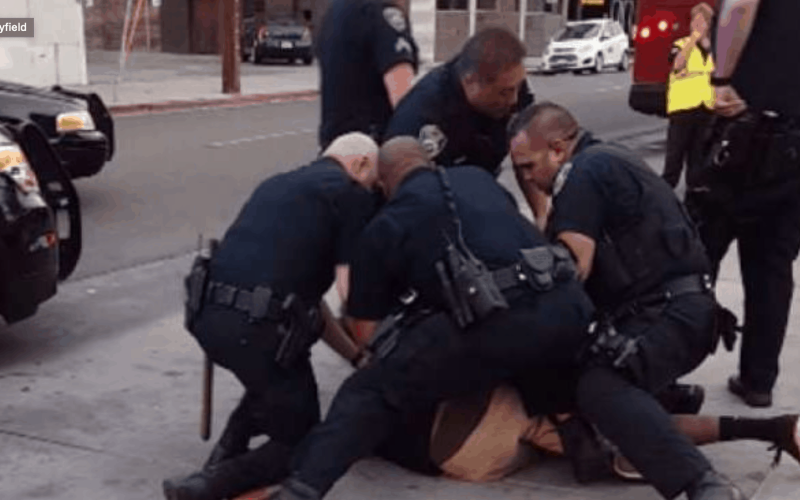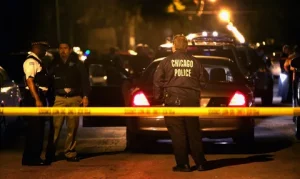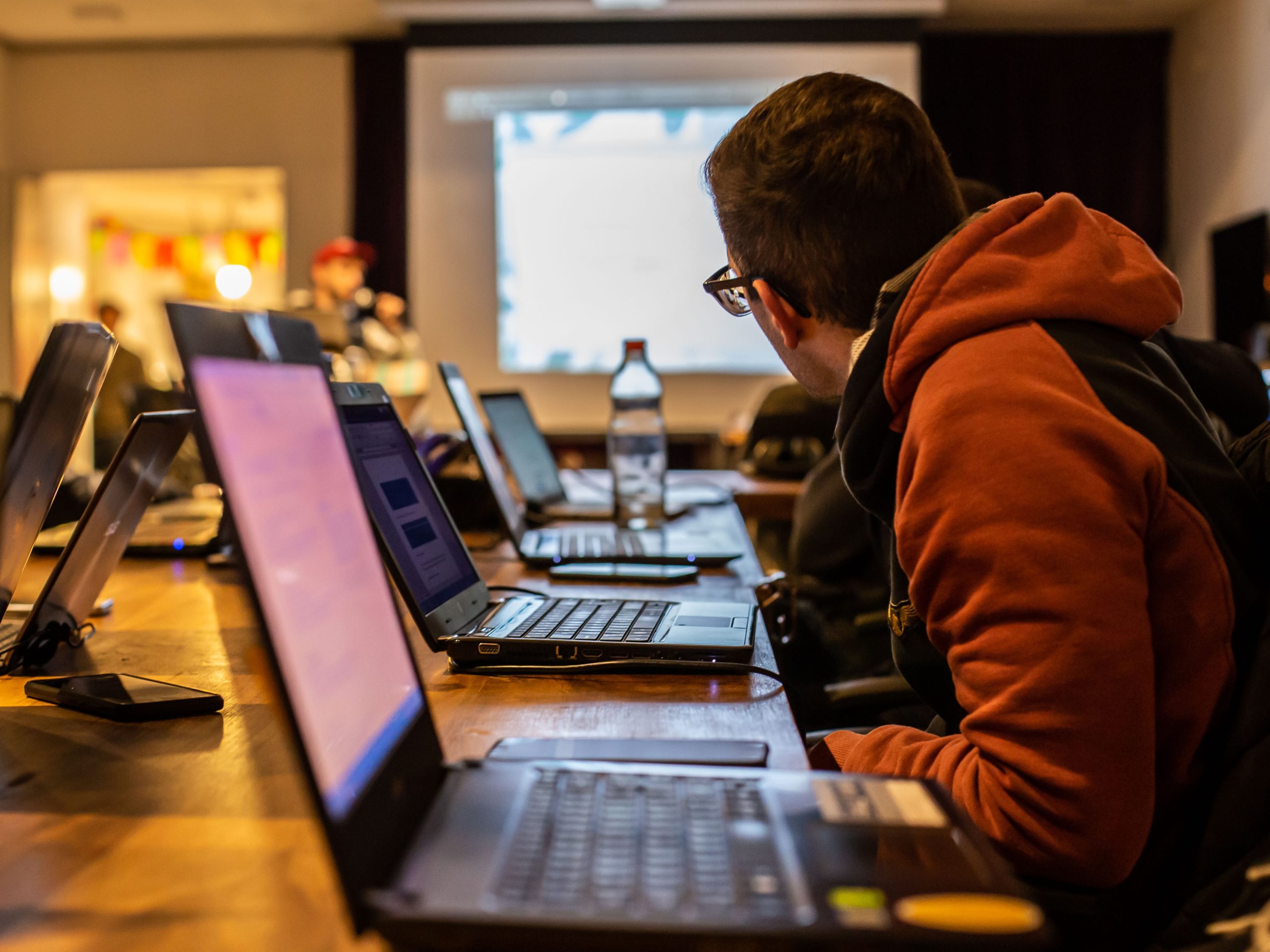In recent news, an incident in Chicago has stirred significant controversy and public outcry. Chicago police officers fired an astounding 96 shots at a black man who was pulled over for not wearing a seatbelt. The incident has sparked outrage and reignited discussions about police conduct and racial bias in law enforcement.
Details of the Incident
The incident unfolded when the man, identified as Marcus Johnson, was stopped by police for a routine traffic violation. Dashcam footage revealed a tense confrontation between Johnson and the officers, escalating quickly into a barrage of gunfire. Shockingly, officers discharged their weapons nearly a hundred times, resulting in Johnson’s death at the scene.
Initial Reactions
The community’s initial response to the incident was one of shock and anger. Many expressed disbelief at the excessive use of force by law enforcement officers during what should have been a routine traffic stop. Calls for accountability and justice reverberated across social media platforms and local news outlets.
Understanding the Context
Prevalence of Police Shootings
The incident in Chicago is not an isolated event but rather part of a larger pattern of police shootings, particularly involving African American individuals. Statistics reveal alarming disparities in the use of lethal force against black Americans compared to other racial groups, highlighting systemic issues within law enforcement agencies.
Racial Tensions and Policing
Racial tensions between minority communities and law enforcement have been a longstanding issue in many cities across the United States. Incidents like the one in Chicago underscore deep-seated mistrust and the need for meaningful dialogue and reform to address underlying issues of racial bias and discrimination within policing.
Impact of Media Coverage
Media coverage plays a crucial role in shaping public perceptions and attitudes towards incidents involving police shootings. The widespread dissemination of footage and eyewitness accounts has helped to draw attention to cases of police brutality and misconduct, prompting greater scrutiny of law enforcement practices.
Analysis of Police Actions
Training and Procedures
Image by: Yandex
Questions have been raised about the adequacy of police training and protocols regarding the use of force. Critics argue that officers should be better equipped to de-escalate situations and exercise restraint, particularly in encounters with non-violent individuals.
Use of Force
The use of lethal force by police officers is subject to strict guidelines and regulations aimed at minimizing the risk of harm to both officers and civilians. However, incidents like the one in Chicago raise concerns about compliance with these standards and the need for greater accountability in cases of excessive force.
Accountability Measures
Accountability mechanisms within law enforcement agencies are essential for maintaining public trust and ensuring transparency in policing practices. Efforts to hold officers accountable for misconduct and abuse of power are critical for fostering a culture of accountability and preventing future incidents of police violence.
Community Response and Protests
Outcry and Anguish
The community’s response to the shooting has been one of grief and anguish, with many expressing outrage over yet another senseless loss of life at the hands of law enforcement. The tragic death of Marcus Johnson has left a profound impact on his loved ones and the wider community, fueling demands for justice and reform.
Calls for Justice
Calls for justice have reverberated throughout the city, with activists and community leaders demanding a thorough investigation into the circumstances surrounding Johnson’s death. Holding the officers involved accountable for their actions is seen as a crucial step towards achieving justice for the victim and his family.
Organized Protests
Organized protests and demonstrations have taken place in response to the shooting, drawing attention to issues of police brutality and systemic racism. The Black Lives Matter movement and other advocacy groups have mobilized supporters to demand systemic reforms and an end to police violence against marginalized communities.
Legal and Judicial Proceedings
Image by: Yandex
Investigations Launched
In the wake of the shooting, authorities have launched investigations into the conduct of the officers involved and the circumstances surrounding the incident. A thorough and impartial inquiry is essential for uncovering the truth and holding those responsible accountable for their actions.
Legal Ramifications
The legal ramifications of the shooting remain uncertain, pending the outcome of ongoing investigations and potential criminal charges against the officers involved. Civil rights organizations and legal experts are closely monitoring developments in the case and advocating for a fair and impartial judicial process.
Potential Reforms
The incident has reignited calls for systemic reforms within law enforcement agencies, including changes to training programs, use-of-force policies, and oversight mechanisms. Community stakeholders and policymakers are exploring legislative solutions aimed at addressing underlying issues of racial bias and police misconduct.
Addressing Systemic Issues
Structural Racism
At the heart of the incident lies the pervasive issue of structural racism within society and the criminal justice system. Addressing systemic inequalities and dismantling institutional barriers to equality is essential for building trust between law enforcement and the communities they serve.
Police Reform Initiatives
Efforts to reform policing practices and promote accountability have gained momentum in recent years, spurred by grassroots activism and public pressure. Initiatives such as community policing, implicit bias training, and civilian oversight boards are aimed at fostering greater transparency and accountability within law enforcement agencies.
Building Trust and Accountability
Rebuilding trust between law enforcement and the communities they serve requires a concerted effort to address the root causes of mistrust and alienation. Meaningful dialogue, community engagement, and collaborative problem-solving are essential for fostering positive relationships and ensuring accountability in policing.
Conclusion
In conclusion, the shooting incident involving Chicago police officers firing 96 shots at Marcus Johnson, a black man pulled over for a seatbelt violation, has sparked outrage and renewed calls for justice and reform. This tragic event underscores deep-seated issues of racial bias and excessive use of force within law enforcement agencies. It highlights the urgent need for comprehensive reforms to address systemic inequalities and rebuild trust between police and the communities they serve. Moving forward, it is imperative that authorities conduct a thorough investigation, hold those responsible accountable, and implement meaningful reforms to prevent similar tragedies in the future. Only through collective action and a commitment to justice can we strive towards a more equitable and just society for all.
______________________________________________________________________________________________________________________________________
FAQs
What led to the confrontation between the police and Marcus Johnson?
The confrontation reportedly began with a routine traffic stop for a seatbelt violation, but quickly escalated into a violent altercation.
What are the next steps in the legal proceedings following the shooting?
Investigations are ongoing, and potential criminal charges against the officers involved are pending. Civil rights organizations and legal experts are closely monitoring developments in the case to ensure a fair and impartial judicial process.
How can communities work towards rebuilding trust with law enforcement?
Rebuilding trust requires open dialogue, community engagement, and collaborative efforts to address underlying issues of racial bias and police misconduct. Implementing reforms such as community policing and civilian oversight can also contribute to fostering positive relationships and accountability within law enforcement agencies.











